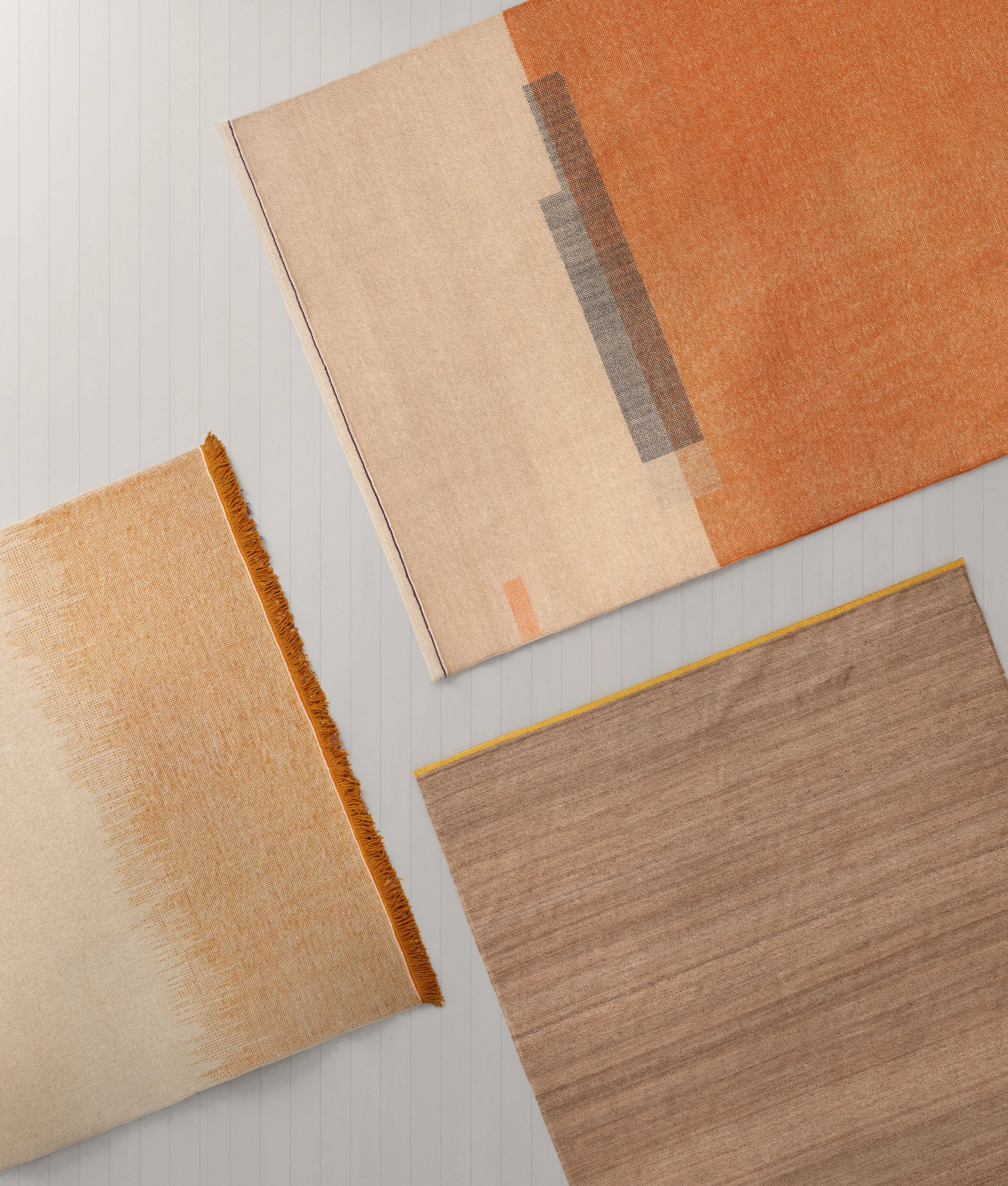A Silent Statement
Edith van Berkel’s new collection of rugs for Maharam is rooted in traditional Nepalese materials and textile production techniques (image: Maharam).
“Nettle is just a very special fibre,” says industrial designer Edith van Berkel, describing how the plant is harvested in remote regions of Nepal before being dried, beaten and spun into yarn to create Bower, one of her latest rug designs for US textile manufacturer Maharam. “They have this technique of splitting [the plant] with their mouth using some water, and twining it like wool,” she says. “The process doesn’t involve any chemical dyeing or excessive water usage, and the yarn is very strong, breathable, and biodegradable.”
As a long-term partner of Hella Jongerius’s studio Jongeriuslab, van Berkel has worked with Maharam for over a decade, initially designing upholstery fabrics until the company acquired Dutch rug brand Danskina in 2012, when she was enlisted to help establish its new rug division. “We had the opportunity to really rebuild the whole thing,” van Berkel says, remembering the years she spent setting up Maharam’s rug production. “I looked for good, fitting and interesting suppliers in both India and Nepal, and those are the suppliers that I still work with.” Van Berkel’s latest project with Maharam, a series of three rugs all produced in Nepal, is characterised by her intimate knowledge of these suppliers and of local craftsmanship techniques. “I’m always visiting on site and I still see new things,” she says. “I’m really sitting next to the weaver and seeing what they are doing.”
Weaving with nettle is a traditional Nepalese technique that benefits from a reduced environmental impact in comparison to other fibres. Since nettle is watered by the rains of monsoon season, it avoids the environmental costs of traditional cultivation such as irrigation and soil degradation, and its large network of underground roots ensures that the plant naturally regrows after it is picked. “Bower started with the idea of making a language in an undyed material and communicating the beauty of natural fibres,” she explains. Since the colour of the nettle varies depending on the season in which it has been harvested, veering either more yellow or more grey than its usual khaki, van Berkel wove the fibre with a two-ply yarn that incorporates both of these tones in order to maintain a level of consistency while celebrating the unique palette of each piece. “The colour will vary, and we have to try and communicate that to a customer, so they value that as an extra layer of beauty,” she says.
Van Berkel’s Bower rug is made primarily from undyed nettle, which contains natural deviations in colour depending on the season in which it was harvested (image: Maharam).
Van Berkel often communicates with weavers via handwoven samples, sometimes even taking over the loom to demonstrate how she wants the design to look. “There’s always a mutual interest in seeing how these ancient, traditional and culturally embedded techniques can shift, in order to break the rules and be innovative,” she explains. Her new rug, Linger, for example, features a deceptively simple design which actually required extensive collaboration and experimentation. Fading from orange to cream to dark red, the colours transition throughout the entire rug, including its fringes – one end is tasselled with orange while the other has a rust-coloured trim – an effect that could only be achieved by dyeing the warp threads. “Dyeing the warp is rather unusual,” van Berkel explains. “It’s something which is traditionally done in Japan for making silk kimonos, but I haven’t seen it before in rug making.” After discussing the idea with a master dyer in Nepal, she initially decided the technique would be too complicated, but the next day she awoke to discover that the dyer had already developed a successful sample of it. “He did it late at night,” she remembers. “He was inspired, because he was curious about something he hadn’t done before.”
Each of van Berkel’s rugs is subtle in its beauty – the shifts in the nettle’s tone create almost imperceptible stripes in Bower, while Compose features patches of hand-embroidered blue silk that colour the textile like shadows. The understated nature of the designs allows the quality of the materials to take centre stage, with each piece crafted primarily from either nettle or Tibetan wool, a fibre with a high lanolin content that retains its sheen as it ages. “The idea isn’t to show off with all different kinds of techniques and cut and paste them together,” van Berkel summarises. “It’s more about highlighting one thing and letting the technique and the material speak for itself – to have more of a silent statement.”
Words Helen Gonzalez Brown


